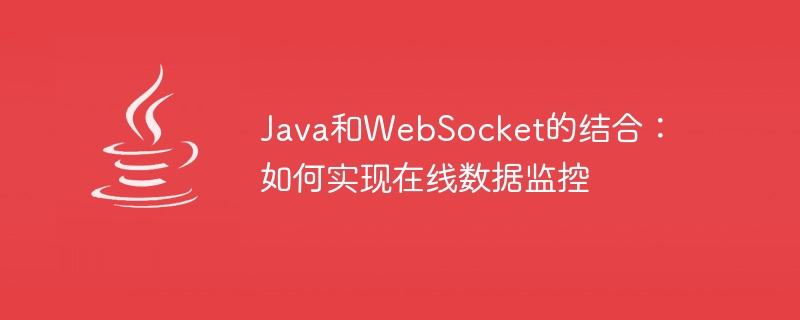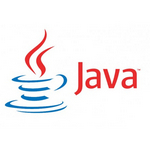
Java和WebSocket的结合:如何实现在线数据监控
引言:
随着互联网的快速发展,数据的实时监控变得越来越重要。在很多实时监控场景下,使用Java结合WebSocket技术可以快速构建实时数据监控系统。本文将介绍WebSocket的基本概念,并通过具体代码示例说明如何利用Java和WebSocket实现在线数据监控。
一、WebSocket简介:
WebSocket是HTML5出现的一种新协议,它实现了浏览器和服务器之间全双工的通信。相较于传统的基于HTTP的Ajax轮询,WebSocket可以实现实时、高效、双向的数据传输,特别适用于在线数据监控场景。
二、Java中的WebSocket实现:
Java提供了多种WebSocket的实现库,其中比较常用的是javax.websocket和Spring WebSocket。本文将以javax.websocket作为示例来介绍Java中的WebSocket实现。
立即学习“Java免费学习笔记(深入)”;
import javax.websocket.OnClose;
import javax.websocket.OnMessage;
import javax.websocket.Session;
import javax.websocket.server.ServerEndpoint;
@ServerEndpoint("/websocketServer")
public class WebSocketServer {
@OnMessage
public void onMessage(String message, Session session) {
// 处理收到的消息
System.out.println("Received message: " + message);
// 发送消息给客户端
session.getBasicRemote().sendText("Hello, client!");
}
@OnClose
public void onClose(Session session) {
// WebSocket关闭时执行的操作
System.out.println("WebSocket closed");
}
}上述代码中,@ServerEndpoint注解定义了WebSocket的endpoint地址,客户端可以通过该地址与服务器建立连接。@OnMessage注解用于处理收到的消息,@OnClose注解用于处理WebSocket关闭事件。
import javax.websocket.*;
@ClientEndpoint
public class WebSocketClient {
@OnMessage
public void onMessage(String message, Session session) {
// 处理收到的消息
System.out.println("Received message: " + message);
}
@OnOpen
public void onOpen(Session session) {
// WebSocket建立连接时执行的操作
System.out.println("WebSocket connected");
}
@OnError
public void onError(Session session, Throwable error) {
// WebSocket发生错误时执行的操作
System.out.println("WebSocket error: " + error.getMessage());
}
}上述代码中,@ClientEndpoint注解定义了WebSocket的endpoint地址,通过调用session的方法来发送消息和接收消息。@OnOpen注解用于处理WebSocket建立连接事件,@OnError注解用于处理WebSocket发生错误事件。
Server端代码:
import javax.websocket.*;
import javax.websocket.server.ServerEndpoint;
@ServerEndpoint("/websocketServer")
public class WebSocketServer {
@OnMessage
public void onMessage(String message, Session session) {
// 处理收到的消息
System.out.println("Received message: " + message);
// 发送消息给客户端
session.getBasicRemote().sendText("Hello, client!");
}
@OnClose
public void onClose(Session session) {
// WebSocket关闭时执行的操作
System.out.println("WebSocket closed");
}
}Client端代码:
import javax.websocket.*;
@ClientEndpoint
public class WebSocketClient {
@OnMessage
public void onMessage(String message, Session session) {
// 处理收到的消息
System.out.println("Received message: " + message);
}
@OnOpen
public void onOpen(Session session) {
// WebSocket建立连接时执行的操作
System.out.println("WebSocket connected");
}
@OnError
public void onError(Session session, Throwable error) {
// WebSocket发生错误时执行的操作
System.out.println("WebSocket error: " + error.getMessage());
}
}三、实现在线数据监控:
使用Java结合WebSocket可以实现在线数据监控的功能。具体步骤如下:
通过以上步骤,可以实现在线数据监控的功能,保障实时并且高效的数据展示。
结论:
本文介绍了Java中使用WebSocket实现在线数据监控的方法,通过具体代码示例说明了Java与WebSocket的结合。通过WebSocket的双向通信,可以轻松地实现实时数据的监控和展示,为在线数据监控提供了更加便利和高效的方式。
以上就是Java和WebSocket的结合:如何实现在线数据监控的详细内容,更多请关注php中文网其它相关文章!

java怎么学习?java怎么入门?java在哪学?java怎么学才快?不用担心,这里为大家提供了java速学教程(入门到精通),有需要的小伙伴保存下载就能学习啦!

Copyright 2014-2025 https://www.php.cn/ All Rights Reserved | php.cn | 湘ICP备2023035733号